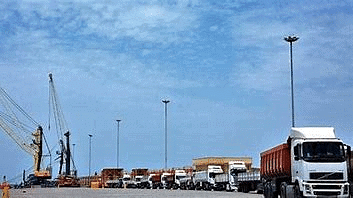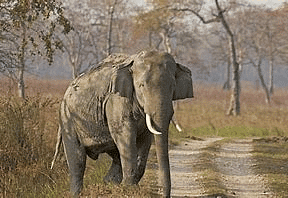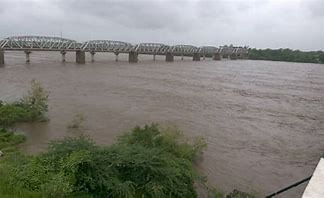UPSC Daily Current Affairs- 14th May 2024 | Current Affairs & Hindu Analysis: Daily, Weekly & Monthly PDF Download
GS-I/Indian Society
Declining Poverty Ratio: A Continuing Trend
Source: The Hindu

Why in News?
The release of the NSSO's 2022-23 and Household Consumption Expenditure Survey has led researchers to analyze poverty and inequality trends, emphasizing issues related to data comparability and measurement.
Trends in Poverty and Inequality:
- Poverty Decline based on various committees:
- Poverty rates according to the Rangarajan Committee decreased from 29.5% in 2011-12 to 10% in 2022-23 (at a rate of 1.77 percentage points per year).
- As per the Tendulkar Committee, poverty rates decreased from 21.9% in 2011-12 to 3% in 2022-23 (at a rate of 1.72 percentage points per year).
- Estimates based on the Tendulkar Committee from an earlier period showed a decline from 37.2% in 2004-05 to 21.9% in 2011-12 (at a rate of 2.18 percentage points per year).
- Inequality declined :
- Subramanian’s estimates indicate the Gini coefficient declined from 0.278 to 0.269 for rural areas and from 0.358 to 0.318 for urban areas between 2011-12 and 2022-23.
- Bansal et al show similar trends: Gini coefficient for rural areas declined from 0.284 to 0.266, and for urban areas from 0.363 to 0.315 over the same period.
- Significant decline in urban inequality compared to rural areas between 2011-12 and 2022-23.
Measurement issues regarding poverty lines and consumption expenditure:
- Shift Away from Calorie Norm-based Poverty Line: Tendulkar Committee recognized the inadequacy of a calorie norm-based poverty line. Instead, the Tendulkar Committee indirectly utilized calorie norms by adopting the urban poverty line based on the Lakdawala Committee’s methodology, which included calorie norms.
- Need new Consumption Basket: The Rangarajan Group emphasized the need for a new consumption basket that addresses both adequate nourishment and essential non-food items, alongside behaviorally determined non-food expenditure.
- Estimating this new poverty basket required a fresh approach rather than simply updating an old basket with new prices.
- Incomplete Capture of Public Expenditure: Despite efforts to impute values for public expenditure items, the imputation process captured only a fraction of the total public expenditure on subsidized or free items.
- Complexity in Poverty Measurement: There is no universally agreed-upon method for measuring poverty, leading to variability in estimates.
The NSSO has changed the reference or recall period of data collection over time to improve the reporting of consumption:
Three estimates of consumption are available depending upon the recall period of different types of expenditure:
- Uniform reference period (URP)
- Mixed reference period (MRP)
- Modified mixed reference period (MMRP).
Conclusion: Given the inadequacy of calorie norm-based poverty lines, as recognized by the Tendulkar Committee, there is a need to adopt more comprehensive approaches that consider evolving consumption patterns and essential non-food items.
GS-I/Geography
Mahi River
Source: Times of India
Why in News?
Two youngsters lost their lives in Mahi River near Kotna village on the outskirts of Vadodara city recently.
About Mahi River:
- It is a significant west-flowing interstate river in India, covering Madhya Pradesh, Rajasthan, and Gujarat, with a drainage area of 34,842 Sq.km.
- Course:
- Originates from the northern slopes of Vindhyas at an altitude of 500 m near village Bhopawar, in the Dhar district of Madhya Pradesh.
- Flows around 120 km in a southerly direction through Madhya Pradesh.
- Enters the southeastern part of Rajasthan, specifically the Vagad region, flowing through Banswara district.
- Makes a 'U'-shaped loop in Rajasthan before entering Gujarat.
- Drains into the Arabian Sea through the Gulf of Khambhat.
- Bounded by the Aravalli Hills, Malwa Plateau, Vindhyas, and the Gulf of Khambhat.
- Tributaries: Eru, Nori, Chap, Som, Jakham, Moran, Anas, Panam, and Bhadar are the main tributaries of Mahi River.
- Mahi River hosts the Mahi Bajaj Sagar Dam, supplying water for drinking and electricity across Gujarat.
GS-I/Geography
Soil Nailing
Source: The Hindu

Why in News?
The initiative, termed as 'slope stabilisation using soil nailing and Hydroseeding method,' is presently in progress in select regions in Tamil Nadu near the primary roads of Nilgiris.
Overview of Soil Nailing: Soil nailing is a geotechnical process that entails inserting reinforcing components into the ground within a defined area to fortify it.
- It involves steel tendons being drilled and grouted into the soil, forming a composite mass akin to a gravity wall.
Methods of Soil Nailing
- Drilled and Grouted Soil Nailing: Nails are placed within pre-drilled orifices and filled with grouting substances.
- Driven Soil Nailing Method: Primarily used for temporary stabilization due to its rapid nature, it lacks corrosion protection for the steel or nails.
- Drilling Soil Nailing Method: This technique utilizes hollow bars where the bars are drilled and grout is infused, generally faster than driven nails.
- Jet Grouted Soil Nailing Method: This approach is employed to erode soil, forming holes where steel bars are inserted and filled with concrete grout.
- Launched Soil Nailing Method: Involves driving steel bars into the ground swiftly using an air pressure-based mechanism; commonly applied for stabilizing slopes, supporting excavations, and repairing retaining walls.
Applications of Soil Nailing
- Stabilizing slopes and landslides
- Supporting excavations
- Repairing existing retaining walls
GS-II/Polity and Governance
Adopting a Transformative Vision for Mediation
Source: The Hindu

Why in News?
The Mediation Act of 2023 formalizes various mediation forms to encourage amicable settlements and reduce judicial backlog, aligning with Chief Justice Chandrachud's "mediate, not litigate" directive.
The Mediation Act of 2023
- Legal Framework Enhancement: The Act strengthens India's legal framework by mandating pre-litigation mediation for disputing parties, irrespective of prior agreements.
- Mediator Panel Establishment: Courts and relevant institutions are required to maintain a panel of mediators to facilitate the mediation process.
Alternative Dispute Resolution (ADR) and its Importance
- Definition and Scope: ADR comprises various methods like mediation, arbitration, conciliation, and negotiation to resolve disputes outside traditional litigation.
- Significance of ADR:
- Efficiency and Speed: ADR processes offer quicker dispute resolution, aiding in reducing judicial backlog and ensuring timely justice.
- Cost-Effectiveness: ADR is generally more cost-efficient than litigation, avoiding high court fees and prolonged legal procedures.
- Confidentiality: ADR proceedings are usually confidential, safeguarding parties' privacy and dispute details.
- Preservation of Relationships: ADR methods like mediation focus on collaboration and communication, fostering improved relationships between parties.
Challenges with the Mediation Act of 2023
- Experience Requirement for Mediators: The Act's 15-year experience prerequisite for mediators could limit mediator availability, hampering the growth of mediation.
- Disconnect in Legal Education: Misalignment between advocacy-focused legal education and the neutrality demanded in mediation may impede the efficiency of legal professionals transitioning between roles.
Fostering the Next Generation of Mediators
- Integrated Learning Approach: Continuous integrated learning can help legal professionals seamlessly switch between advocacy and mediation roles, enhancing skills throughout their careers.
- Innovative Training Methods:
- Co-mediation: Pairing novice mediators with experienced practitioners allows practical experience in real mediation scenarios.
- Structured Mediation Training in Law Schools: Integrating mediation training in law school curricula can spark early interest and equip students with essential dispute resolution skills.
- Amendments to Experience Requirement: Revising experience prerequisites to enable younger professionals to become mediators sooner can broaden the pool of qualified mediators and expedite mediation practices' adoption.
Conclusion
Public and legal community awareness about mediation benefits can shift perceptions from litigation towards amicable dispute resolution.
GS-II/International Relations
Chabahar Port
Source: India Today

Why in News?
India recently signed a 10-year agreement with Iran to develop and manage the Chabahar port, marking a pivotal development in bilateral ties between the two nations.
About Chabahar Port:
- Located in Iran's Sistan-Baluchistan province, the Chabahar Port is a significant deep-water port situated at the Gulf of Oman's mouth, offering direct access to the Indian Ocean.
- Comprising Shahid Beheshti and Shahid Kalantari ports, Chabahar's strategic geographic position makes it a vital transit point on the International North-South Transport Corridor (INSTC).
- INSTC, connecting the Indian Ocean to the Caspian Sea through Iran and further to northern Europe via Russia's Saint Petersburg, enhances Chabahar's potential as a pivotal commercial center.
- With Kandla port in Gujarat 550 Nautical Miles away and Mumbai at a distance of 786 Nautical Miles, Chabahar's location underscores its importance in regional trade.
- In May 2016, India, Iran, and Afghanistan entered a tripartite agreement to develop the Shahid Beheshti Terminal, marking India's maiden foreign port initiative.
- The project's objective is to establish a robust international transport and transit corridor at Chabahar, including the construction of a rail line to Zahedan.
- Envisioned to enable India's direct access to Afghanistan and Central Asia, Chabahar serves as a strategic hub for transit trade between India, Iran, and Afghanistan.
- By offering an alternative to the traditional Silk Road route through China, the port facilitates diversified trade and enhances regional connectivity.
GS-III/Environment and Ecology
OLEANDER FLOWERS
Source: Indian Express

Why in News?
Two Kerala government-controlled temple boards, which together manage 2,500-odd temples in the state, have banned the use of oleander flowers (locally known as arali) in temple offerings after a 24-year-old woman died from accidentally chewing some oleander leaves.
Background:
- Oleander's Toxicity: The toxicity of oleander is well-known globally.
- About Oleander: Nerium oleander, commonly known as oleander or rosebay, is a plant grown worldwide in tropical, subtropical, and temperate regions. It is valued for its drought resistance and is commonly used for decorative and landscaping purposes.
- Oleander in Kerala: In Kerala, oleander is referred to as arali and kanaveeram. It is often found along highways and beaches, serving as natural green fencing. Various oleander varieties exist, each with flowers of different colors.
References in Ayurveda:
- API Mentions: The Ayurvedic Pharmacopoeia of India (API) includes references to oleander. It suggests using oil from the root bark to treat skin conditions.
- Charak Samhita: The leaves of the white-flowered variety are recommended externally for severe skin ailments, including leprosy.
- Bhavaprakasha: Karvira (another name for oleander) is considered a poison and is used in treating various conditions like infected wounds, skin diseases, parasites, and itching.
Toxicity Effects:
- Intoxicating Properties: Ingesting or inhaling smoke from burning oleander can be intoxicating due to cardiac glycosides like oleandrin and digitoxigenin present in all parts of the plant.
- Cardiac Glycosides: These are steroidal compounds that affect the heart muscle, leading to stronger and faster contractions.
- Effects of Oleander Toxicity: Symptoms include nausea, diarrhea, vomiting, rashes, confusion, dizziness, irregular heartbeat, slow heartbeat, and in severe cases, death.
GS-III/Environment and Ecology
Kaziranga National Park
Source: The Hindu

Why in News?
Assam's Kaziranga National Park has recorded its highest revenue in its 50-year history, amounting to INR 98.8 crore, collected from tourists.
Background:
- Kaziranga National Park, situated in the Golaghat and Nagaon districts of Assam, India, boasts diverse landscapes such as elephant-grass meadows, swampy lagoons, and dense forests. It is a sanctuary for over 2200 Indian one-horned rhinoceroses, which represent around two-thirds of the global population of this species.
About Kaziranga National Park:
- Located on the periphery of the Eastern Himalaya biodiversity hotspot, Kaziranga National Park stands out for its rich species diversity and wildlife visibility. Designated as a UNESCO World Heritage Site, the park is particularly famous for its population of Indian one-horned rhinoceroses, a major draw for tourists.
- Recognized as an Important Bird Area by BirdLife International, Kaziranga plays a vital role in conserving avifaunal species.
- A notable conservation success story, Kaziranga has transitioned from saving the Indian one-horned rhinoceros from near extinction in the early 20th century to hosting the largest population of these rhinoceroses today.
- Covering an area of 1,090 km², the park is a habitat for a significant breeding population of elephants, wild water buffalo, and swamp deer. Additionally, the endangered Ganges dolphin can be found in some of its enclosed oxbow lakes.
- Kaziranga's tiger population has seen a rise over time, leading to its designation as a Tiger Reserve in 2006.
- The park's vegetation varies due to altitude differences, featuring alluvial inundated grasslands, alluvial savanna woodlands, tropical moist mixed deciduous forests, and tropical semi-evergreen forests.
- Noteworthy trees in the park include Kumbhi, Indian gooseberry, cotton tree, and elephant Apple. The park is intersected by four major rivers, including the Brahmaputra.
- Kaziranga faces several challenges like poaching, habitat loss from human encroachment, and annual flooding from the Brahmaputra River. Conservation efforts encompass anti-poaching strategies, community engagement, and habitat rehabilitation initiatives.
GS-III/Economy
Goods and Service Tax
Source: Indian Express
Why in News?
The Goods and Services Tax (GST) collections as a percentage of Gross Domestic Product (GDP) have reached pre-GST levels, according to Finance Minister Nirmala Sitharaman. The monthly gross GST collections have been increasing, recently surpassing Rs 2 lakh crore as per the April data released on May 1 by the Finance Ministry.
Background
- GST in India is a replacement for VAT on goods and services. It is a comprehensive, multi-stage, destination-based tax system that has absorbed most indirect taxes except certain state taxes.
- The GST Act was approved by the Parliament on March 29, 2017, and came into effect on July 1, 2017.
About Goods and Service Tax
- GST streamlines taxation across India, creating a unified common market.
- It is a single tax applied to goods and services from production to consumption.
- Under GST, both the Centre and States can tax the entire supply chain, ensuring taxes are levied at each stage of value addition.
- Credits for input taxes paid at each stage are available in the subsequent stages, making GST a tax on value addition.
- The end consumer bears only the GST charged by the last dealer in the supply chain.
Benefits of GST
For Business and Industry
- Easy Compliance: A robust IT system ensures online services for registrations, returns, and payments, enhancing compliance transparency.
- Uniform Tax Rates: GST establishes common tax rates nationwide, promoting business certainty and ease.
- Removal of Cascading: Seamless tax credits minimize cost build-up, reducing hidden business expenses.
- Improved Competitiveness: Lower transaction costs enhance trade and industry competitiveness.
For Central and State Governments
- Simple Administration: GST simplifies tax processes at both Central and State levels through a comprehensive IT system.
- Control on Leakage: Enhanced tax compliance is incentivized by seamless input tax credit transfer, reducing tax evasion.
- Higher Revenue Efficiency: GST is expected to boost revenue collection efficiency for governments.
For Consumers
- Transparent Taxation: A single, transparent tax on goods and services enhances clarity for consumers.
- Reduced Tax Burden: Efficiency gains and reduced leakages are expected to lower overall tax burdens on most goods, benefiting consumers.
|
38 videos|5264 docs|1112 tests
|























